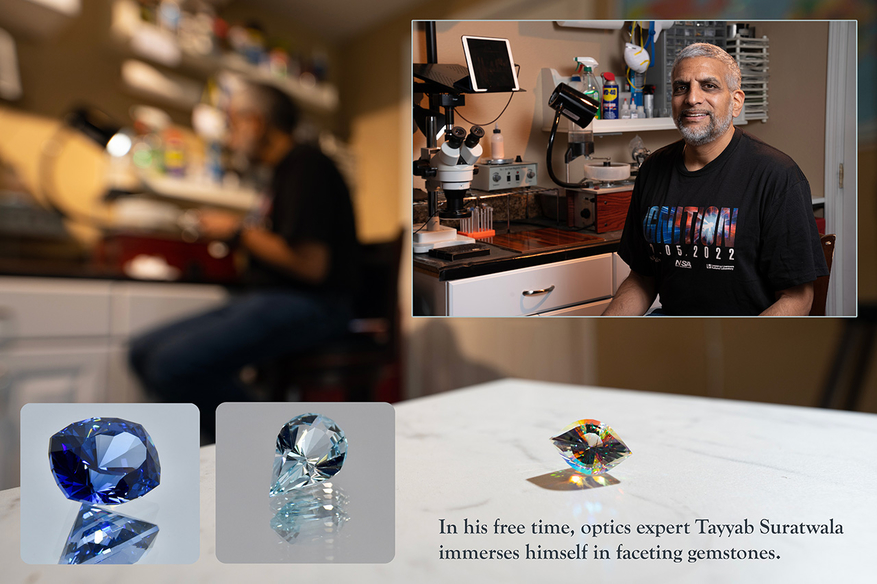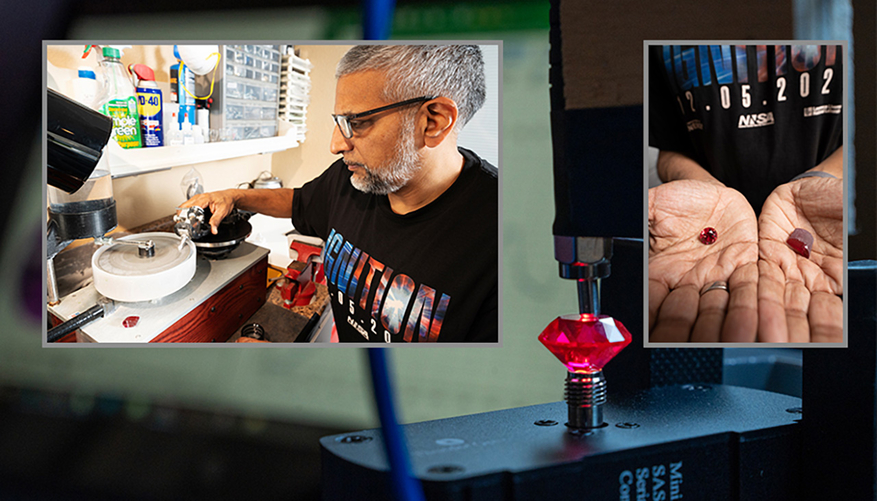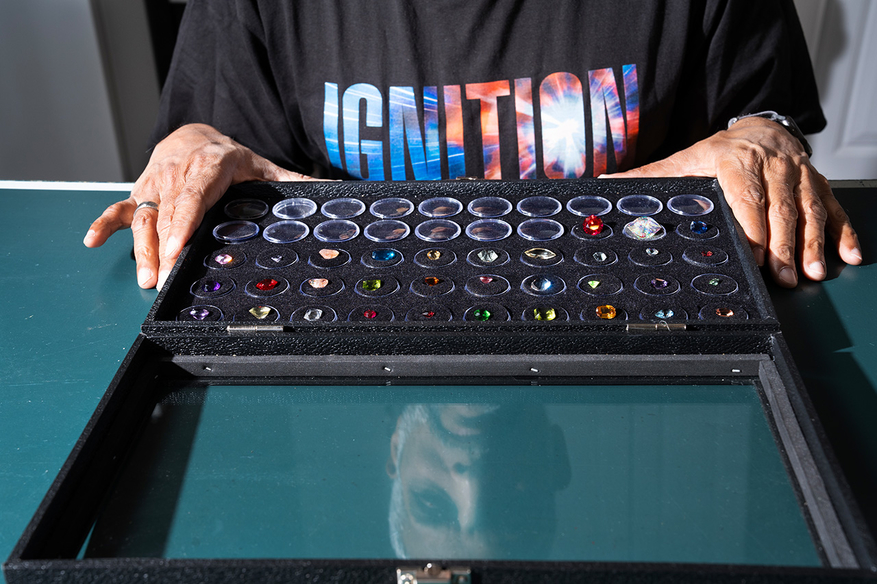Every stone is a new challenge. Within each one is a breathtaking gem waiting to emerge and dazzle — if the right sequence of cuts, angled perfectly, is applied with optical design precision and artistry.
“It is tremendously fulfilling to see and control the transformation of a transparent ordinary rock with random shape to a beautiful gemstone, maximizing its brilliance, dispersion and color,” said Tayyab Suratwala. “This hobby is an interesting combination of materials science, materials processing and optics. It requires a lot of patience. You just can’t do it on a schedule, but that’s what draws me in, the zen of putting everything else aside and just playing with the materials. It’s very therapeutic.”
As a materials scientist and Optics and Materials Science & Technology Program director, Suratwala has always been drawn to rocks, minerals and other interesting materials. About 30 years ago, he began collecting rocks on his travels.
“Pretty soon my living room became a showcase for my rock and mineral collection,” he said.
The centerpiece is a five-foot square glass topped coffee table, filled with a jumble of rocks and minerals. In the early lockdown days of the pandemic, he spent a lot of time looking at this collection wondering what he could do with it.
“At work, I lead research in grinding and polishing optics for use on the National Ignition Facility and other laser systems,” he said. “I decided to try it at home on a small scale.”
He purchased some off-the-shelf equipment from the hardware store and began working on some obsidian rocks. The result, he said, wasn’t very interesting, just smoother rocks in simple shapes like cubes.
He dove further into the hobby and discovered the faceting community. Faceting is the craft and art of cutting, through grinding and polishing, a raw semiprecious stone into a gem to give it facets, or flat surfaces, at controlled 3-dimensional angles. Through faceting, gemstones sparkle by trapping the incoming light in the stone via total internal reflection.
And, by a lucky coincidence, during this time he was invited to speak about optics at a meeting of the Columbia Willamette Faceters Guild, which includes master cutters, professionals and hobbyists among its membership.
“As a hobbyist just getting into faceting, it was incredible to meet so many amazing faceters,” he said. “Now they are my resource.”
Among those faceters were faceting educator and historian Justin Primm, maker of museum-quality replicas of famous gems Scott Sucher, Faceters Guild President Tim Thomas and John Emmett, associate director of LLNL’s first laser program in the 1970s.
Suratwala came to LLNL in 1997, straight from finishing his Ph.D. in materials science and technology at the University of Arizona, to work on laser glass for the National Ignition Facility, which was right at the time of its ground-breaking. Laser glass is one of the Seven Wonders of NIF, breakthrough technologies that made NIF possible. He now leads a team that works on many other optics and their technologies.
Today, in addition to collecting rocks and minerals, Suratwala has a growing stockpile of “rough,” or, raw semiprecious stones ready to be faceted into a gemstone to reveal their brilliance. To date he’s cut more than 40 gemstones for his personal showcase, although he did make a peridot ring for his wife.
“There are so many different materials with different properties and they each require a different faceting process. And there are thousands of different designs. Each time I cut, I work to improve my precision and quality,” he said. “Faceting is a fascinating combination of artistry and science.”
Losing himself in gemstones started as a pandemic hobby, but it’s become a source of joy and satisfaction.
“I find myself thinking about the next stone. It’s incredibly satisfying to transform rough into a dazzling gemstone,” he said. “And it’s safe to say that I’ve acquired enough rough to keep myself busy for the next 15 years. For anyone interested in faceting, I’ll warn that it’s addictive and can be expensive.”
To learn more about faceting, he recommends the Columbia Willamette Faceters Guild website and both volumes of “Amateur Gemstone Faceting” by Tom Herbst.
– by Patti Koning







